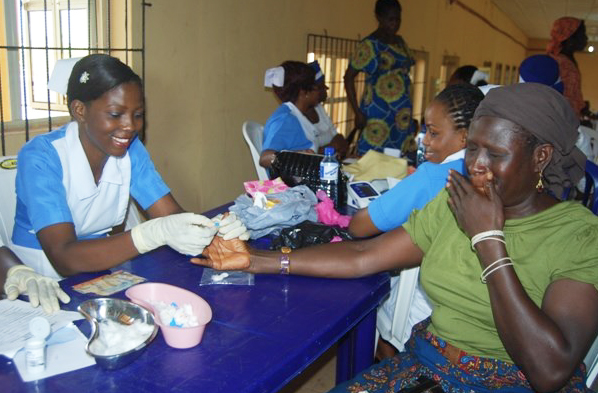Diabetics
What Is Diabetes?
Type 2 diabetes is the most common form of diabetes. It is caused by the body not being able to use insulin correctly. This causes the blood glucose (sugar) levels to be higher than normal, also called Hyperglycemia.
What Happens If Diabetes Is Not Treated?
When diabetes is left untreated, the persistently high glucoses levels can cause damage
to the organs in your body. This increases your risk for heart attack, stroke, kidney failure,
blindness, chronic pain, wounds or cuts that do not heal, limb amputation, and death.

How Is Blood Glucose (Sugar)
And Diabetes Tested?
Blood glucose is tested by a finger stick blood test. A doctor or nurse will prick the tip of your finger to get a drop of blood. The blood is dropped on a test strip and then placed into a small machine called a glucometer. This machine will test your sugar levels and provide your level in minutes. If you have not eaten, the blood glucose reading should be between 80 and 130 mg/dL. If you have eaten in the last two hours this should be below 180 mg/dL. There is another blood test called an A1C that will tell your doctor your average blood sugar level for the last 2 to 3 months. This test required formal bloodwork at a lab. The goal for this test is to be at or below 7%.

How Often Should This Test Be Done?
Routine follow-ups and screens are an important part of controlling diabetes. If you have diabetes, it is important to monitor your blood sugar to ensure your treatment is working. If your doctor prescribes medications is it important to take them as instructed and have your blood sugar checked to ensure the medication is keeping your blood pressure in a safe range. Your doctor will tell you how often your blood glucose level should be tested.
Anti-Diabetic Medications
Your physician may prescribe medication to help control your blood sugar. It is important to follow your doctor’s instruction when taking these medications.
